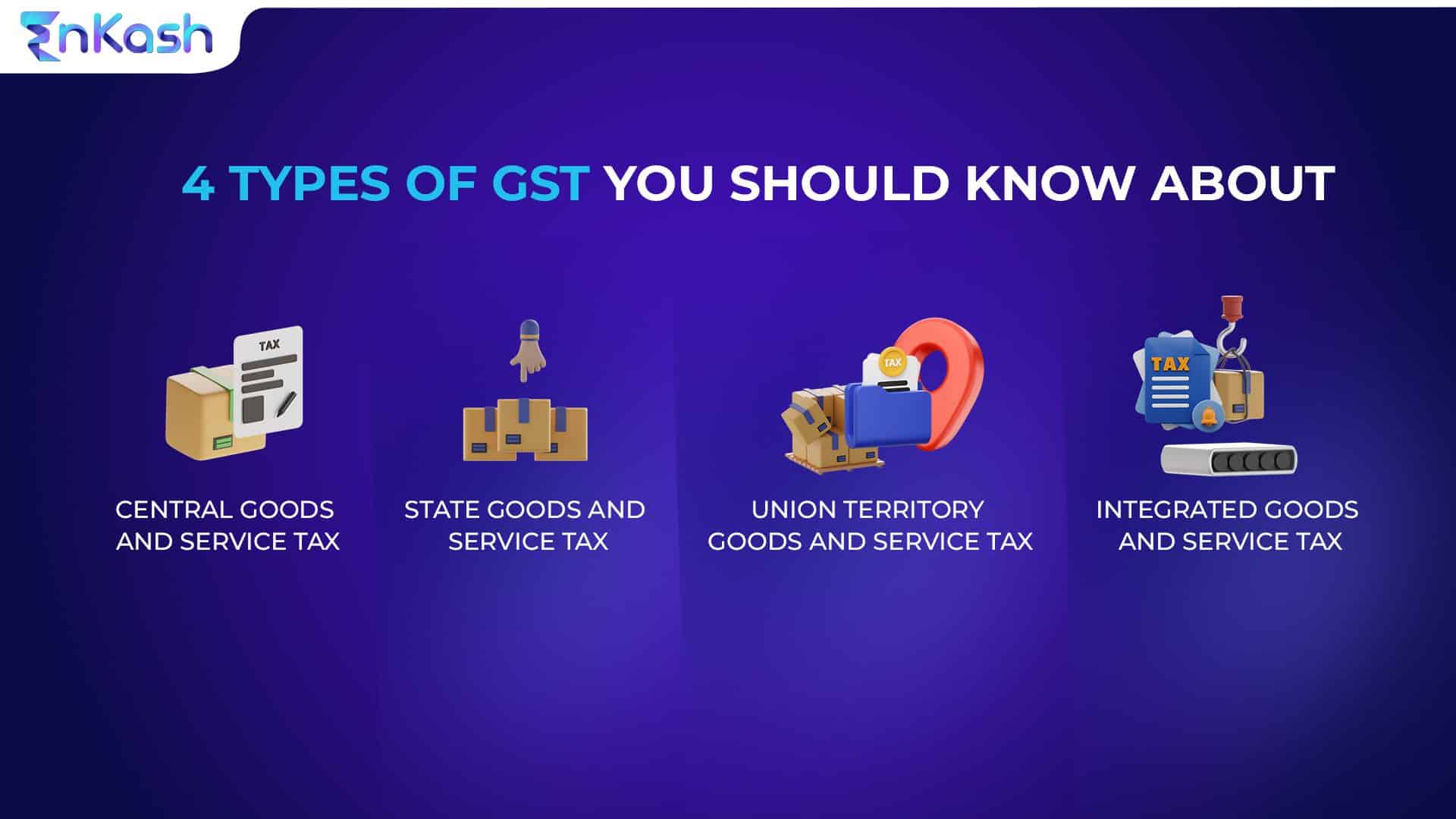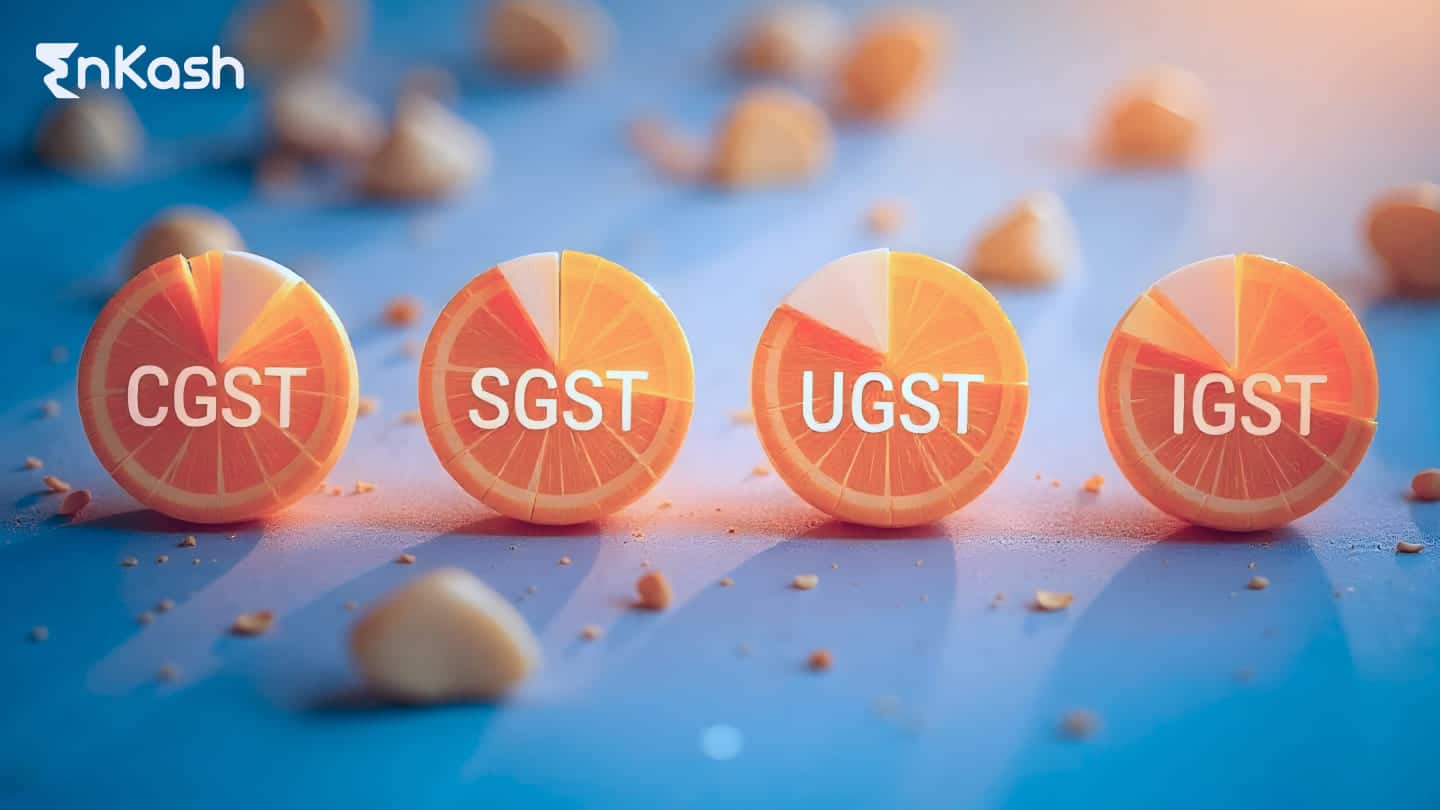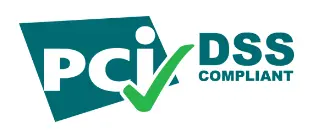A comprehensive indirect tax system was introduced in India in 2017 known as the Goods and Services Tax (GST). It replaced a multitude of indirect taxes like excise duty, value-added tax (VAT), and others. This destination-based tax is levied on the supply of goods and services. GST aims to simplify the tax system for businesses.
Let’s explore the different types of GST to gain a clearer understanding of the concept and its impact on you as a taxpayer.
How Many Types of GST in India?

There are four main types of GST categories, which include Central Goods and Services Tax (CGST), State Goods and Services Tax (SGST), Union Territory Goods and Services Tax (UGST), and Integrated Goods and Service Tax (IGST).
1. Central Goods and Services Tax (CGST)
Meaning: CGST is the tax levied by the Central Government on the intra-state supply of goods and services. It is governed by the Central Goods and Services Tax Act, of 2017.
Applicability: CGST is applicable when the supply of goods or services occurs within a single state. For instance, if a supplier in Maharashtra sells goods to a customer in Maharashtra, CGST is levied.
Input Tax Credit: Businesses can claim the input tax credit for the CGST paid on their purchases, which can be set off against their CGST liability.
Revenue Sharing: The revenue collected from CGST is deposited with the Central Government.
Example: If a product is sold within the state of Karnataka, the applicable GST rate is 18%. Then, the GST rate would be divided equally, with 9% constituting CGST and the remaining 9% as SGST.
2. State Goods and Services Tax (SGST)
Meaning: SGST is the tax levied by the State Government on the intra-state supply of goods and services. The respective State Goods and Services Tax Act, 2017, governs it.
Applicability: SGST applies to the supply of goods and services within a single state, alongside CGST.
Input Tax Credit: Businesses can claim the input tax credit for the SGST paid on their purchases, which can be set off against their SGST liability.
Revenue Sharing: The revenue collected from SGST is deposited with the respective State Government.
Example: Continuing the earlier example, if a product is sold within Karnataka, 9% would be SGST, which goes to the Karnataka state government.
3. Union Territory Goods and Services Tax (UGST)
Meaning: UGST is the tax levied on the supply of goods and services within the Union Territories of India, which include Andaman and Nicobar Islands, Lakshadweep, Dadra and Nagar Haveli, Daman and Diu, Chandigarh, and the National Capital Territory of Delhi.
Applicability: UGST applies to the intra-Union Territory supply of goods and services. It is levied in place of SGST.
Input Tax Credit: Businesses can claim the input tax credit for the UGST paid on their purchases, which can be set off against their UGST liability.
Revenue Sharing: The revenue collected from UGST is deposited with the Union Territory administration.
Example: If a product is sold within the Union Territory of Chandigarh, UGST would be applicable instead of SGST, alongside CGST.
4. Integrated Goods and Services Tax (IGST)
Meaning: IGST is the tax levied on the inter-state supply of goods and services, as well as on imports and exports. The Integrated Goods and Services Tax Act, of 2017 governs it.
Applicability: IGST is applicable when the supply of goods or services occurs between two states or between a state and a Union Territory. It is also levied on imports and exports to ensure a seamless flow of input tax credits.
Input Tax Credit: Businesses can claim the input tax credit for the IGST paid on their purchases, which can be set off against their IGST, CGST, and SGST/UGST liabilities.
Revenue Sharing: The revenue collected from IGST is shared between the Central and State Governments based on the destination of the goods and services.
Example: For instance, a transaction involving the sale of a product from Maharashtra to Tamil Nadu would be subject to Integrated Goods and Services Tax (IGST). If the GST rate is 18%, then 18% IGST would be applicable, which will be shared between the central and state governments.
Note: These are simplified examples. Actual GST calculations can be more complex based on various factors like input tax credits, exemptions, and different GST rates for different goods and services.
The payment of GST on time is of great importance to any business. Failure to do so can result in penalties and statutory compliance issues. Often companies face issues retrieving the amount to be paid from the portal and then going through the process of making the challan, checking it, and getting the approvals internally to make the payment.
That is where a platform like the one we offer to our customers at EnKash helps you. You can set maker, checker, and approver levels within the tax payments module so that once you retrieve the amount to pay, you can get the requisite approvals in place.
Moreover, you also have various payment options to complete the payment via the portal. Once the payment is completed, your finance system is updated automatically.
Want To Pay Your GST On Time?
Difference Between the Types of GST Categories
GST Category |
Description |
Applicability |
Collected By |
Central Goods and Services Tax (CGST) |
Imposed by the central government on the sale of goods and services within a single state. |
Applies within a state |
Central Government |
State Goods and Services Tax (SGST) |
Levied by the state government on intrastate transactions of goods and services |
Applies within a state |
State Government |
Union Territory Goods and Services Tax (UTGST) |
Functions similarly to SGST, but is applicable within Union Territories. |
Applies within a union territory |
Union Territory Government |
Integrated Goods and Service Tax (IGST) |
Levied on interstate transactions of goods and services, and also applies to imports and exports |
Applies between states or for import/export |
Central Government |
Objective of GST
The Goods and Services Tax (GST) was introduced in India in 2017 with the primary objective of simplifying the indirect tax system. It aimed to:
- Reduce Cascading Effect: Previously, several indirect taxes were levied at different stages of production and distribution, leading to a cascading effect that inflated the final price of goods and services. GST eliminates this by having a single tax point
- Promote Tax Compliance: A simpler tax structure with fewer exemptions makes GST easier for businesses to understand and comply with
- Boost Economic Growth: GST aims to encourage economic activity and growth by streamlining tax processes and reducing compliance burdens
- Create a Unified Market: GST facilitates the seamless movement of goods and services across states by eliminating inter-state tax barriers
Taxes Replaced with GST
GST categories replaced a multitude of indirect taxes previously levied by the central and state governments. These included:
- Central Excise Duty
- Value Added Tax (VAT)
- Service Tax
- Central Sales Tax (CST)
- Octroi and Entry Tax
- Additional Excise Duty (AED)
- Luxury Tax
- Entertainment Tax
By consolidating these taxes under one umbrella, GST aims to bring greater transparency and efficiency to the tax system.
Conclusion
The introduction of GST categories in India, with its four distinct types – CGST, SGST, UGST, and IGST – has been a game-changer for the country’s tax system. The consolidated tax system under GST removed the cascading tax effect, created a unified market, and encouraged economic growth while improving tax compliance. While challenges remain, continuous efforts by the government and stakeholders are addressing these issues, ensuring that GST achieves its full potential as a transformative tax reform. As businesses and consumers adapt to the GST regime, the benefits of a simplified, transparent, and efficient tax system are becoming increasingly evident.
Types of GST – FAQs
What is GSTIN?
It is the unique identification number that is assigned to each taxpayer. It consists of 15 digits and is assigned to business entities or individuals at the time of registration completion under the regime.
What is the full form of CGST?
The full form of CGST is the central goods and services tax, which has been brought to supersede all the indirect taxes the central government had in place. These taxes applied to goods and services that were moved intrastate.
What is the full form of IGST?
IGST stands for integrated goods and services tax, which is one of the 3 components that form the goods and services tax (GST). It is applicable when goods or services move interstate.
What is the full form of SGST?
This translates to state goods and services tax, which is part of the state goods and services tax 2016. The tax applies to goods and services traded within the state and is deposited in the state government’s account.
Who is liable to pay GST?
Any person or business entity that carries on the supply of goods or services in India, with a turnover exceeding the threshold limit (currently ₹20 lakh per annum) is liable to register for GST and pay the tax.
What goods are exempted from GST payment?
Certain essential items like fruits, vegetables, milk, bread, and certain agricultural products are exempt from GST. You can find a comprehensive list of exempted goods and services on the official GST website.
What is input tax credit (ITC)?
The input tax credit is the credit available to a registered taxpayer for the GST paid on the purchase of goods or services used in the course of business.
Can input tax credit be claimed for all GST paid?
No, input tax credit can be claimed only for GST paid on purchases that are used for business purposes.
What will happen if I don’t pay GST on time?
Delays in GST payment can result in penalties and interest charges imposed by the tax authorities.
What is the GST rate in India?
The applicable Goods and Services Tax (GST) rate in India varies based on the nature of goods or services. They are categorized into four main slabs: 5%, 12%, 18%, and 28%. Some essential items may be exempted or subject to lower rates, while luxury items may attract higher rates.














